Located in southern Africa, Zambia is a considerable distance from a place like Japan. The School of Veterinary Medicine at the University of Zambia, which was founded in 1983 with funding from the Japanese government’s Official Development Assistance (ODA), is a premier institution for training researchers in infectious diseases in Zambia, a country with a diverse range of wildlife and a wealth of natural beauty.
University of Zambia School of Veterinary Medicine. Image Credit: PHC Europe B.V.
The School of Veterinary Medicine at the University of Zambia has received support from the International Institute for Zoonosis Control (previously known as the Research Center for Zoonosis Control) of Hokkaido University for many years.
Hokkaido University and the University of Zambia collaborated on a global research project in 2005 as part of the J-GRID (Japan Initiative for Global Research on Infectious Diseases) program run by the Japanese Ministry of Education, Culture, Sports, and Technology. This project led to significant advancements in the field.
A Japanese government initiative called SATREPS (Science and Technology Research Partnership for Sustainable Development), which encourages international collaboration in research, chose the project “Surveillance of Viral Zoonoses in Africa” in 2012. The project is presently in its second phase.
Projects in Zambia also utilize PHCbi products, which have been delivered to a number of ODA projects. Professor Ayato Takada, the project’s leader, and Assistant Professor Masahiro Kajihara, the other researcher, were both interviewed with regard to how PHCbi products influence research outcomes internationally.
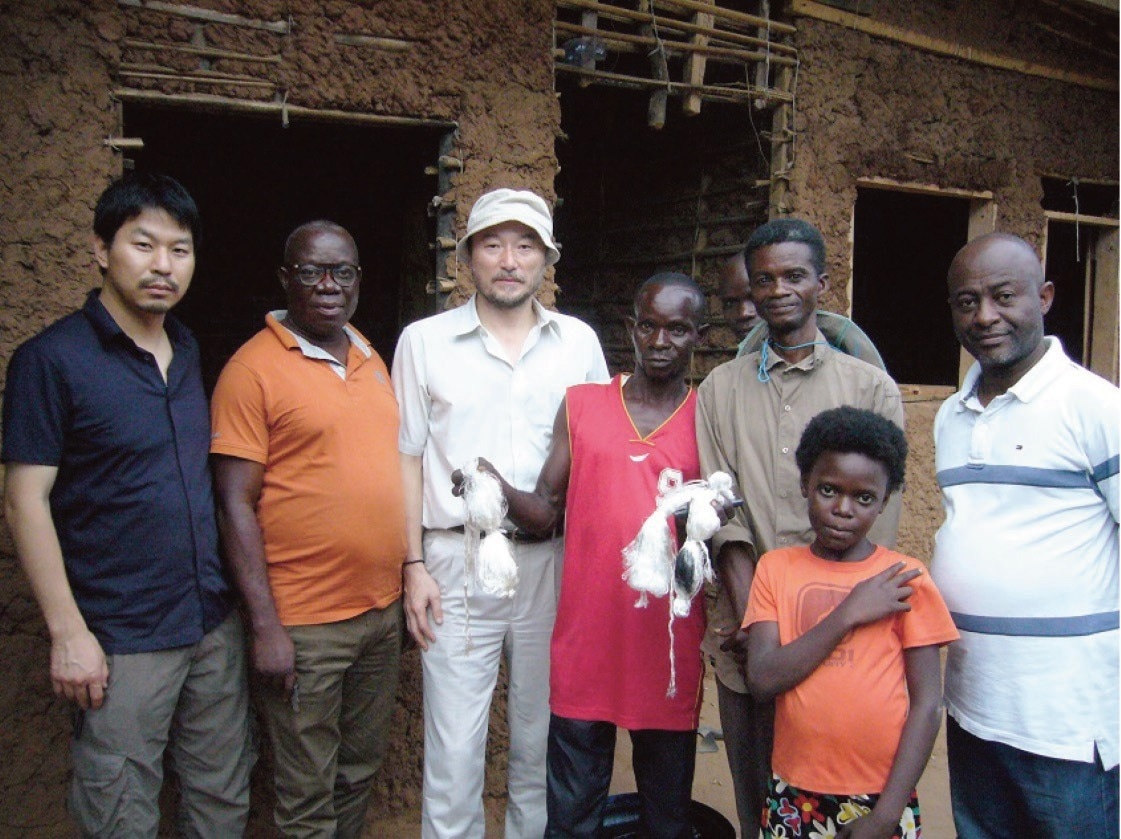
Professor Ayato Takada (Center), Assistant Professor Masahiro Kajihara (Left side). Image Credit: PHC Europe B.V.
Identifying animals that carry viruses
What kind of research is being done in Zambia?
Takada: The researchers are investigating Ebola in cooperation with the School of Veterinary Medicine at the University of Zambia. Local outbreaks of the disease have occurred across borders in Africa. Thankfully, Zambia has not yet experienced it, and according to Professor Ayato Takada, preventive actions should be taken.
When an animal-borne virus infects people, it is known as a zoonotic disease called Ebola. Zoonosis cannot be stopped by merely modifying human behavior. Finding the host that carries the virus is thus crucial. Powerful preventative measures can be taken once the virus’s origin is identified.
At the moment, bats are the main host of Ebola. In Zambia, biological samples, including blood and organs, are initially taken from captured bats. The species of bat and the presence or absence of viruses are determined by looking at the genes and antibodies. More than a thousand bats have been investigated so far.
In addition to these experiments, the researchers are working to create Ebola diagnostic techniques. This is the second phase of the SATREPS project. In the initial stage, they created a diagnostic kit for the Ebola virus in association with another company.
In the Democratic Republic of the Congo, when an epidemic happens, the diagnostic kit, which is utilized in the second phase, is also employed.
PHCbi products provide behind-the-scenes support for SATREPS research
It was not simple to set up a lab at the University of Zambia’s School of Veterinary Medicine. To prevent heat-related equipment from failing, the crew had to install air conditioners. They also had to construct airtight windows to keep sand out.
They practically had to start anew. Zambia did not have the necessary equipment, so they had Japanese research equipment transported over. Products from PHCbi, including ultra-low temperature freezers, were included in this.
In what ways are the PHCbi products used in this project?
Kajihara: Reagents and culture medium for cell culture are kept in the pharmaceutical freezers. To read DNA and RNA sequences, PCR products are also briefly stored in them. Cell culturing is done in CO2 incubators. Researchers had to keep cells to develop viruses since they can only grow in cells.
Additionally, they are employed to cultivate the antibody-producing hybridoma cells. Reagents for PCRs and samples that do not require ultra-low storage temperatures are kept in the medical freezers. They would be problematic if they malfunctioned because they also contain pricey chemicals.
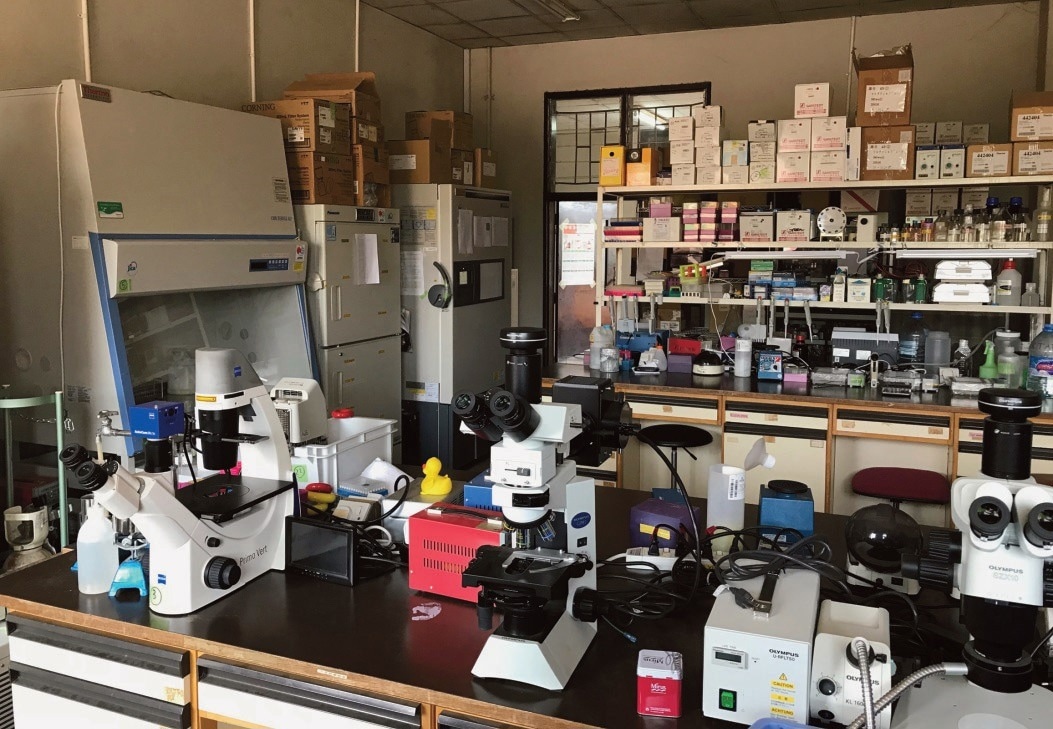
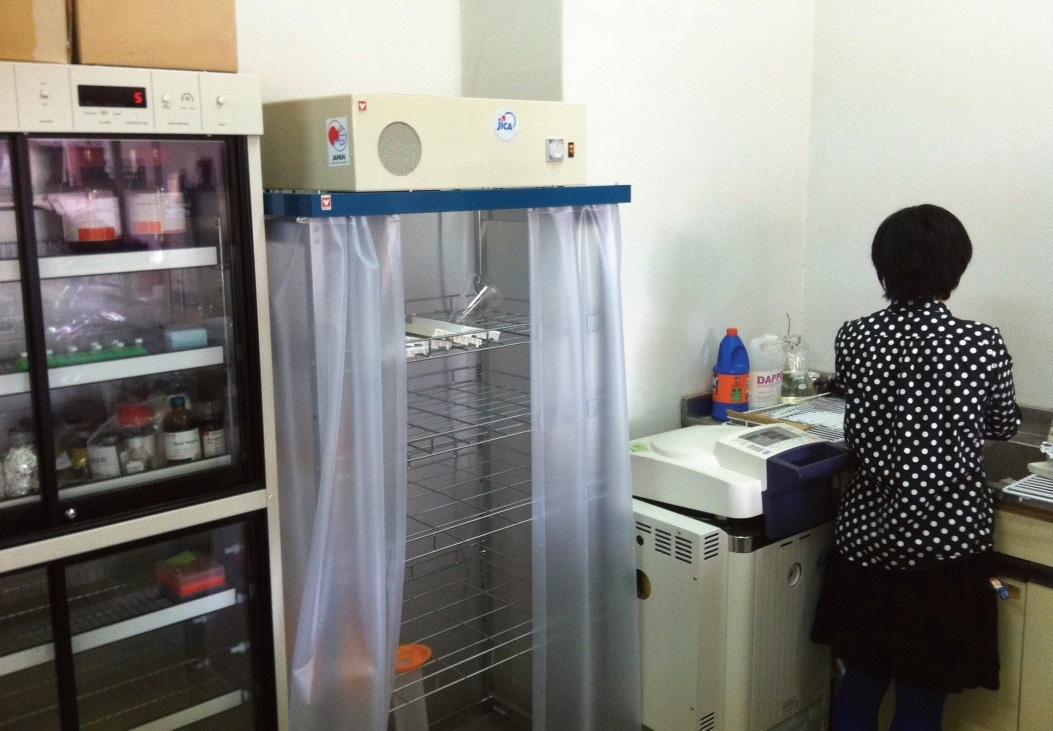
Laboratory at the School of Veterinary Medicine, University of Zambia. Image Credit: PHC Europe B.V.
Animal tissue samples that were gathered in the field as well as cultivated cells are kept in ultra-low temperature freezers. Biological samples can be held semi-permanently in freezers maintained at –80 °C without causing harm to the samples’ genes while still preserving virus and cell activity.
Takada: The substance is continually kept at –80 °C when it is semi-permanently stored. When the tissues and cells defrost, they will perish; therefore, emergency power supplies are prepared as Zambia is prone to power interruptions.
In the event that the freezer malfunctions, there is nothing that can be done. This could become a serious issue as there are no readily accessible freezer replacements, and there are no service people available to come and fix it like there are in Japan.
Due to this, the machinery utilized in ODA projects must be incredibly dependable.
I have a kind of faith in Japanese goods like PHC. I purchased an ultra-low temperature freezer and shipped it to the University of Zambia 14 years ago, and it is still operational today. They are quite robust.
Kajihara: It was shocking to see that Japanese supplies that were provided in the 1980s, when the School of Veterinary Medicine was initially created, were still in use when I first arrived at the university.
Going all the way to Zambia to catch bats and gather samples while wearing full-body protective gear is a challenging endeavor. It is to be noted that it took a long time to gather samples in the first place. A veterinary school, a lab, and lab equipment were all built up by the University of Zambia forty years ago. A lot of effort is put into obtaining one sample.
They were very careful in choosing the equipment and creating a backup system because if the freezer fails, all the value that was contained in the sample will disappear in a split second.
What has been the experience of using PHCbi products?
Kajihara: The Zambian employees have been utilizing the goods in unique ways, and the fact that they are well-written in English is beneficial.
I personally appreciated the dry heat sterilization feature of the CO2 incubator.
The buttons make it simple to use, and I like the fact that the medical freezer’s defrost function can be operated separately by chamber.
I was familiar with these products as I had been using them since I was a student. I particularly appreciated that I could see what was within the medicine cabinet door without opening it, making it easy to locate and remove items. The cabinet’s size was also perfect.
A veterinary school active in the fight against COVID-19
An international cooperative research initiative called SATREPS aims to tackle global concerns by maximizing the benefits and capability of emerging nations while also advancing Japan’s technical prowess. This is the aim that Professor Takada and his associates are pursuing.
What have been the effects of the project?
Takada. Surveys, research, and the creation of diagnostic and treatment techniques for use in clinical settings are all moving forward gradually. These initiatives have also benefited training.
The University of Zambia boasts a large number of researchers who studied at Hokkaido University and gained technical skills via collaboration with Japanese teams due to years of cooperative research and exchange programs. Strong teams take several years to form, so this is a major accomplishment.
The University of Zambia’s School of Veterinary Medicine operated as a diagnostic facility for patients who were thought to have Ebola during the West African Ebola outbreak in 2014. This is because it was the only institution in the country with employees who were familiar with the disease as well as the tools and resources required to conduct a genetic diagnosis.
Additionally, the School of Veterinary Medicine actively participated in the current epidemic. At the beginning of the epidemic, the Zambian government established two institutions. One was a premier research facility for the study of human viral diseases, and the other was the School of Veterinary Medicine at the University of Zambia.
It was rare for veterinary colleges to be in charge of evaluating human diseases because they are often responsible for animal diseases. That demonstrates how astounding their accomplishment was in 2014.
Kajihara: The staffing cycle for the researchers is excellent. Research on viruses and infectious diseases is conducted at the University of Zambia by people from near and far.
I believe that there have always been people who have wanted to conduct the study, but up until recently, they had to travel abroad to do it.
However, I am happy to see that the research base and employee training are improving, and Zambian researchers are now able to pass on their knowledge and expertise to the younger generations.
Takada: It took more than 30 years, but we have finally been able to get this far.
What are your future plans?
Kajihara: Currently, the team is collaborating with experts in animal ecology to track and study bats using transmitters to determine things like the kind of life that bats lead, and what they look for when they fly.
If we can learn more about them, we will be able to understand the trends of the viruses that infect bats better. We aim to advance our research as soon as possible, but it is very frustrating right now as we cannot get out to Zambia due to the current COVID-19 pandemic.
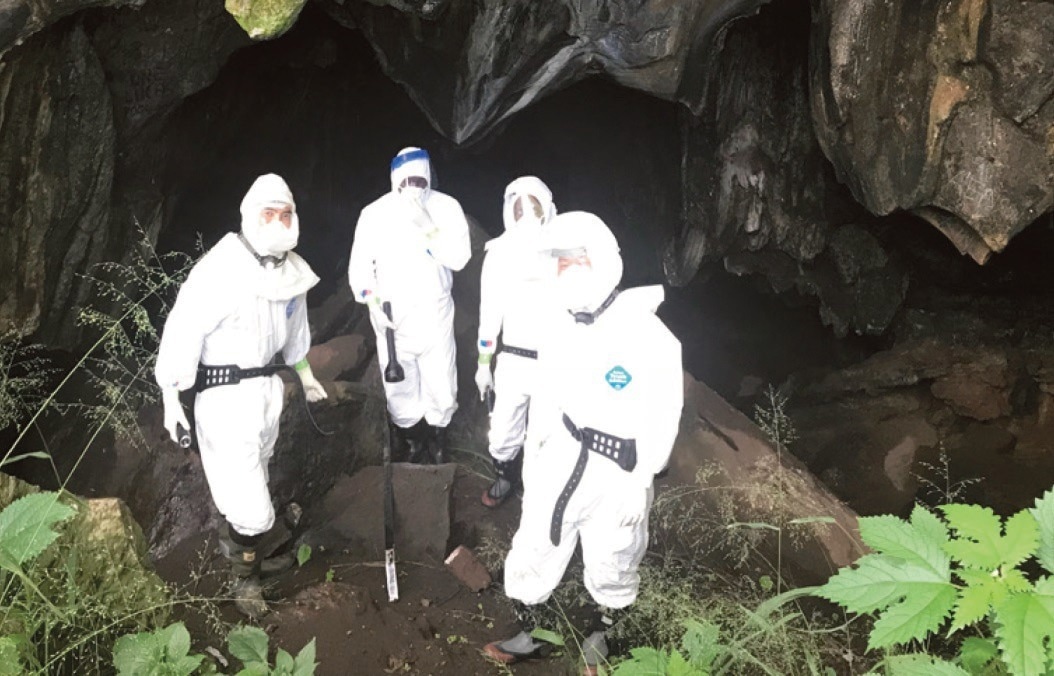
Research in a cave with bats, Zambia. Image Credit: PHC Europe B.V.
Takada: The ongoing SATREPS project, “Project for the epidemiological research on zoonotic virus infections in Africa,” is a collaboration between the University of Zambia and the National Institute of Biomedical Research of the Democratic Republic of the Congo (Institut National de la Recherche Biomédicale), and other institutions.
The laboratory in the Congo has only just been set up, so the research foundations and relationships are not yet in place. Therefore, there is a lot of work to do moving forward.
SATREPS will come to an end in 2023 as it is a five-year project. Nonetheless, I intend to maintain contact with Zambia whether or not there is another project of a similar nature.
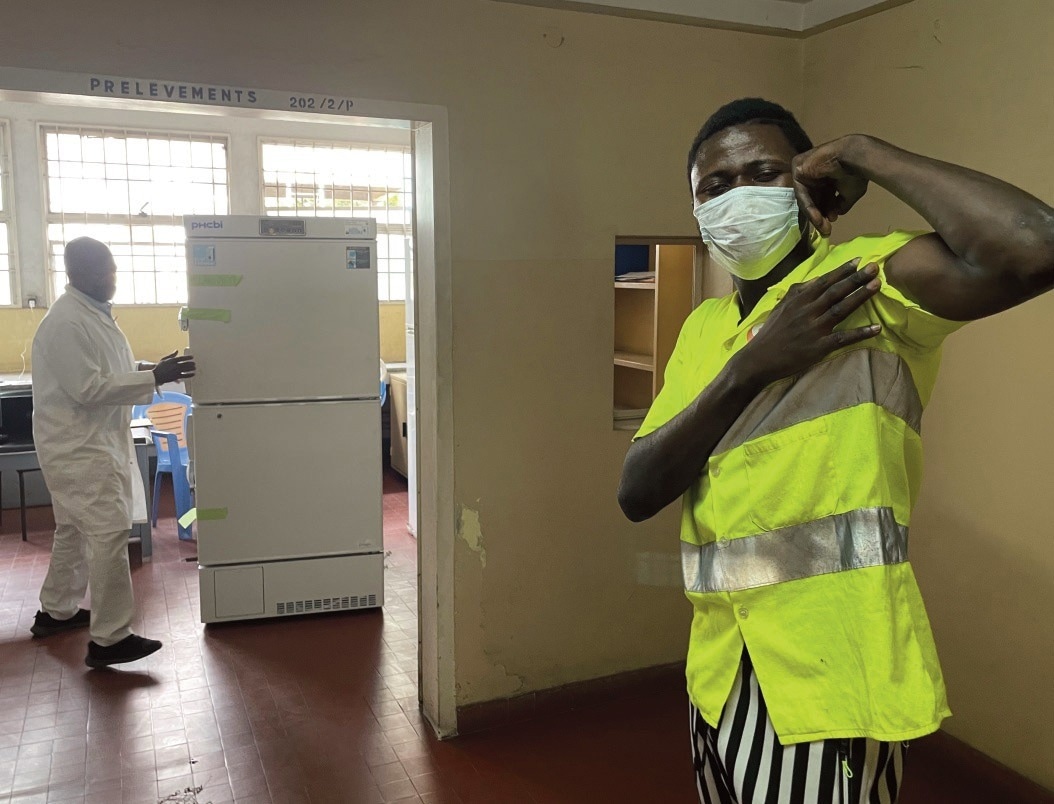
Installation of PHCbi equipment. National Institute of Biomedical Research, the Democratic Republic of the Congo. Image Credit: PHC Europe B.V.
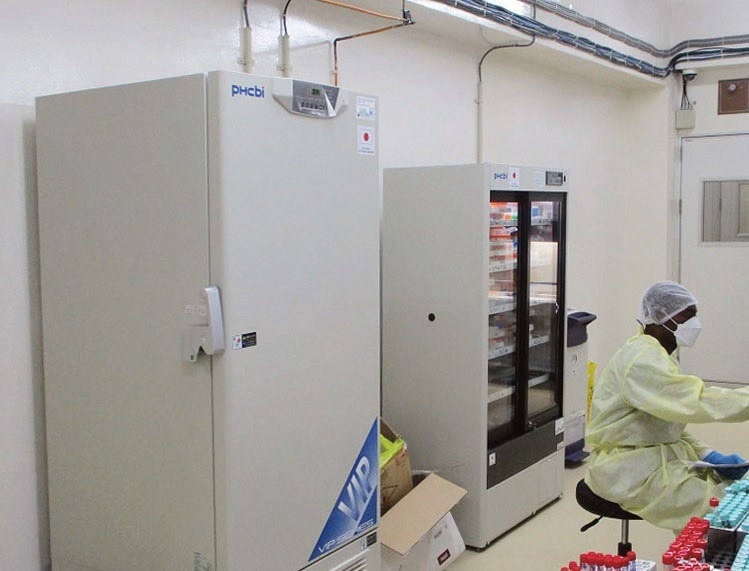
PCR Testing. Laboratoire Vétérinaire Central, Democratic Republic of Congo. Image Credit: PHC Europe B.V.
Takada: To carry on our work, we would like to get our own research funding.
The aim of SATREPS is to “address global issues.” As we saw from COVID-19, we cannot solve problems by only protecting our own countries or developed countries. I hope that this will be an opportunity for many people to think on more of a global scale.
Despite being fairly distant from Japan, PHCbi products are utilized in Zambia and the Democratic Republic of the Congo. Considering the context and since national infrastructures vary widely, research tools must be both simple to use and reliable enough to avoid issues.
Thanks to the dedicated work of academics with great technical abilities, this initiative, which aims to address the worldwide zoonosis problem, is progressing steadily. Our team is eager to see how the study connecting Zambia and Japan progresses.
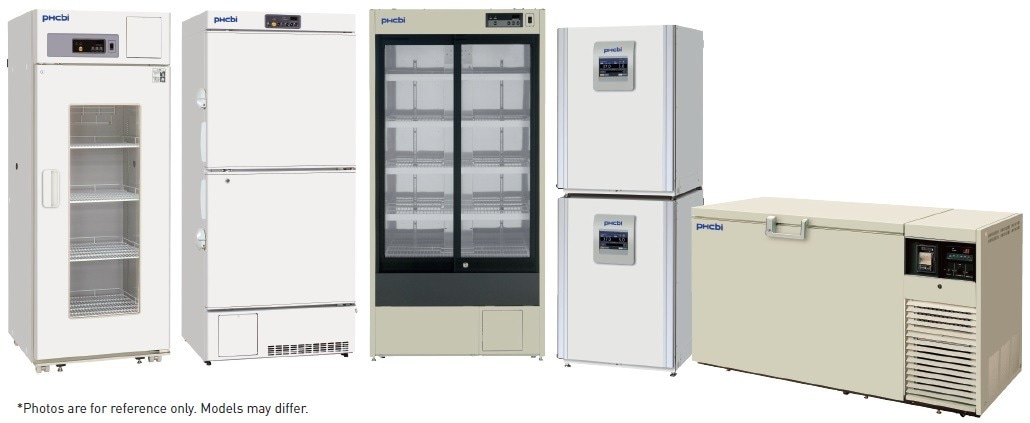
Image Credit: PHC Europe B.V.
About PHC Europe B.V.
Founded in 1990 as subsidiary of the PHC Holdings Corporation, it is our mission to become a leading, trusted brand for sustainable healthcare and biomedical product solutions, which support the work of our customers to improve the health and well-being of people around the world.
For more than 25 years now, we respond to the needs of our pharmaceutical, biotechnology, hospital/clinical and industrial customers, offering an unique perspective on scientific research in general. As a result we play a critical role in product development for worldwide applications and have established a reputation as a manufacturer of high-quality and innovative medical and laboratory equipment.
Long lasting relationships have been built with leading pharmaceutical, healthcare and biotechnology companies as well as with major academic and research institutes in Europe. PHC Europe B.V. has set the standard in many aspects. V.I.P. panels, Cool Safe compressors, Active Background Contamination Control and the world’s first -152 °C ULT freezer. Where PHC Europe B.V. took the initiative, the others followed. This made us a very important player in both the ultra-low temperature and the CO2 market.
Sponsored Content Policy: News-Medical.net publishes articles and related content that may be derived from sources where we have existing commercial relationships, provided such content adds value to the core editorial ethos of News-Medical.Net which is to educate and inform site visitors interested in medical research, science, medical devices and treatments.
